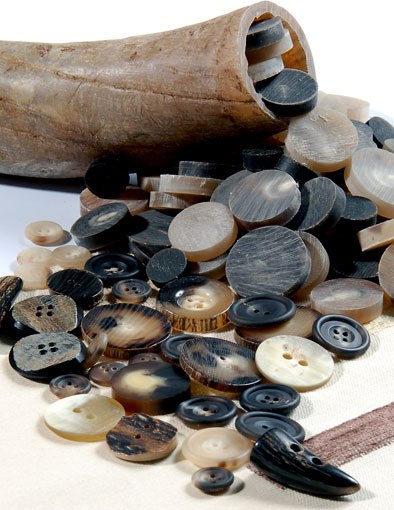A Showcasing to Men’s Buttons
Buttons might seem like a small detail in the grand scheme of fashion, but they play a crucial role in defining a man’s style. From classic shirts to sophisticated suits, buttons can elevate an outfit from ordinary to exceptional. Let’s dive into the world of men’s buttons and discover how they are manufactured and know their contribution to your wardrobe’s sophistication and charm.
THE BASICS : TYPES OF BUTTONS
Buttons are manufactured in various shapes, sizes, and materials, each serving a distinct purpose and aesthetic. Here are some common types you’ll encounter:
- Shirt Buttons: These are typically small and manufactured from materials like plastic, mother-of-pearl, or metal. They’re used on dress shirts, casual shirts, and even polo shirts, offering functionality with a touch of style.
- Suit Buttons: Suit jackets often feature buttons manufactured from horn, metal, or covered in fabric to match the suit’s material. The number of buttons on a suit jacket can vary (e.g., one-button, two-button, or three-button), each influencing the jacket’s formality and silhouette.
- Blazer Buttons: Blazer buttons are larger than suit jacket buttons and can be manufactured from metal, brass, or even enamel. They add a decorative element to blazers and sport coats, often reflecting personal style or club affiliations.
- Overcoat Buttons: Overcoats typically have larger buttons, manufactured to withstand colder weather and complement the coat’s fabric and design.






Style and Functionality

Beyond their practical purpose of fastening garments, buttons contribute significantly to a man’s style:
- Aesthetic Appeal: The choice of buttons can overall make a outfit look luxurious. For example, contrasting buttons on a shirt or jacket can create visual interest, while subtle, matching buttons maintain a cohesive appearance.
- Statement Pieces: Buttons can serve as statement pieces, especially on blazers or coats. Unique designs, such as vintage buttons or ones featuring intricate patterns, can become conversation starters and reflect personal taste.
- Quality and Durability: High-quality buttons not only look better but also last longer. Investing in garments with well manufactured buttons ensures they withstand frequent wear and washing without losing their appeal.
Personalization and Customization
For those who appreciate attention to detail, customizing buttons offers a way to tailor clothing to individual preferences:
- Personal Monograms: Adding monogrammed buttons on bespoke shirts or jackets adds a personalized touch and reinforces a sense of exclusivity.
- Mixing Materials: Experimenting with different button materials—such as wood, leather, or even semi-precious stones—can lend a unique flair to formal and casual attire alike.
Practical Considerations
While style is paramount, practical considerations should also guide button selection:
- Functionality: Ensure buttons are securely attached and easy to fasten and unfasten.
- Maintenance: Different materials require varying degrees of care. For instance, metal buttons may tarnish over time, requiring occasional polishing.
- Replacement: Having spare buttons sewn into garments or keeping extras handy ensures quick fixes if a button is lost or damaged.

